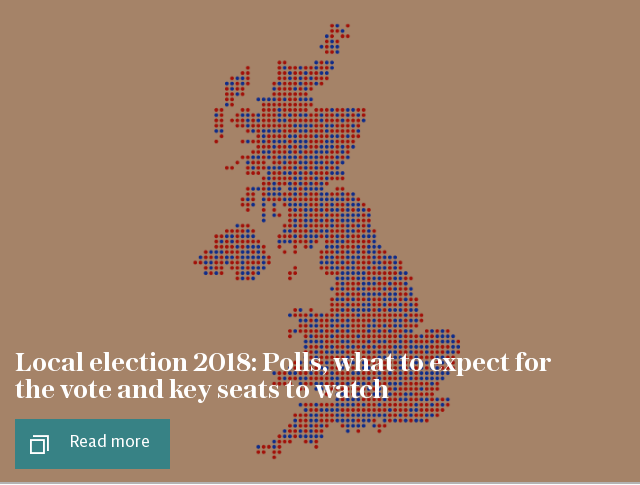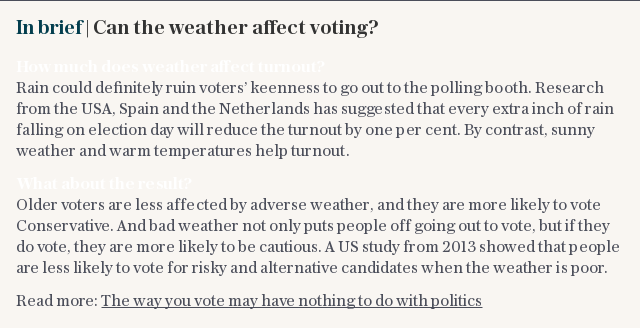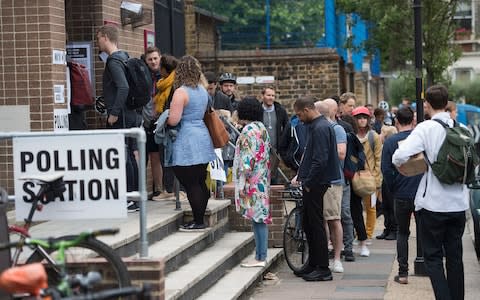Local elections 2018: date, how and where to vote, and when to register by

Every year in May, voters in the UK make their way to polling stations to have their say on how the country and their local area is run. Last year saw two elections: the local election on May 4 and the general election on June 8.
In 2018 we will have another local election, with more than 4,300 council seats being contested. Here is everything you need to know about voting, from how long you have left to register to where to go on the day.
When is the local election?
This year's local election is on Thursday May 3. The elections will be held for all 32 London boroughs, 34 metropolitan boroughs, 68 district and borough councils, and 17 unitary authorities.
Plus, there will be elections for the mayoralties of Hackney, Newham, Lewisham, Watford and Tower Hamlets, and a parliamentary by-election in West Tyrone will take place on the same day.
The last time the seats up for election were contested is in the 2014 local elections.

How do I register to vote?
If you have registered to vote before, you do not need to register again; there's no need to register for every separate election.
However if you have changed address, name or nationality you will need to register again. To vote in the local and mayoral elections in England on May 3, the deadline to register is Tuesday April 17.
In England, Scotland or Wales, you can register to vote online for the local election at gov.uk/register-to-vote. It usually takes approximately five minutes.
In Northern Ireland, you must register to vote here.
Who is eligible to vote in a UK local election?
To vote in a UK local election a person must be registered to vote and also
18 or over
be a British citizen, a qualifying Commonwealth citizen or a citizen of the European Union
be a resident in the UK
not be subject to any legal incapacity to vote
In the UK, Commonwealth and Irish citizens enjoy the same civic rights as British citizens, namely:
the right to vote in all elections (i.e., parliamentary, local, referendum and European elections) as long as they have registered to vote (they must possess valid leave to enter/remain or not require such leave on the date of their electoral registration application).
the right, unless otherwise disqualified, to stand for election to the British House of Commons as long as they possess indefinite leave to remain or do not require leave under the Immigration Act 1971 to enter or remain in the UK.
the right, if a qualifying peer or bishop, to sit in the House of Lords.
eligibility to hold public office (e.g., as a judge, magistrate, minister, police constable, member of the armed forces, etc.).
The following cannot vote in a UK local election:
anyone other than British, qualifying Commonwealth or European Union citizens
convicted persons detained in pursuance of their sentences (though remand prisoners, unconvicted prisoners and civil prisoners can vote if they are on the electoral register)
anyone found guilty within the previous five years of corrupt or illegal practices in connection with an election.
Although members of the House of Lords cannot vote in general elections, they can vote at elections to local authorities, devolved legislatures and the European Parliament).
Likewise, while EU citizens cannot vote in general elections in the UK, they can vote at elections to local authorities, devolved legislatures and the European Parliament.

Can you vote outside of the UK?
If you are away from the UK or for any reason cannot go to a polling station on election day, there is the option of applying for a postal vote.
The process is simple, but Northern Ireland voters will have to provide a valid reason applying for their ballot paper.
Another option available is to vote by proxy, by having another person cast your ballot paper on your behalf.
Applying for a postal vote
To vote by post in this year's local election, your local Electoral Registration Office must receive your application by 5pm on April 18 2018.
In order to apply for a postal vote you will first need to fill out the appropriate forms which you can find on gov.uk.
When you fill out the application, you will need to declare how long you wish to qualify for a postal vote. This means you will have to chose if you just want to vote in the local election, over a specific period of time or keep the postal vote permanently.
Put down your address, optional contact details and sign a declaration with your date of birth and signature.

On the day: where do I go to vote?
You can't just turn up to any polling station - you have to go to the one you're assigned to.
Your polling card, which you will have received through the post, is the easiest way to find out where you are registered to vote. It will include the name and address of your designated polling station.
If you've not received your polling card but you know you have registered, give your local authority a ring to check. You can find the contact details by using the postcode finder tool on the About My Vote website.
When are the polling stations open?
Polling stations are open from 7am to 10pm on the day of the election, and are usually located in public buildings like schools or local halls. Counting will begin immediately after the polls close. Each vote is counted and checked by hand.

I can't find my polling card - what do I do?
Don't panic. If you've lost it, or accidentally thrown it away, you can still vote as long as you've registered.
Just head down to the polling station and give your name and address and you will be able to vote when they find you on the electoral register.
If you voted in the 2017 general elections and you haven't moved house since, then you'll be fine.
I definitely didn't receive a polling card
It's probably because you didn't register to vote before the deadline, which means you can't vote today. Remember to register next time!
How do I vote?
Step one: Go to your local polling station
If you need assistance getting to the polling station, contact your electoral registration office to find out if they can help. You can also ask to have a companion with you when you vote, or staff in the polling station may be able to help you.
Tell the staff inside the polling station your name and address so they can check that you are on the electoral register. You don't need to take your polling card with you, but many people do.
Polling station staff are representatives of the (Acting) Returning Officer and should act impartially at all times.

Step two: Read your ballot paper
Polling station staff will give you a ballot paper listing the parties and candidates you can vote for. You may be given more than one ballot paper if there is more than one election on the same day.
If you have a visual impairment, you can ask for a special voting device that allows you to vote on your own in secret, or a large print ballot paper.
Step three: Cast your vote
Take your ballot paper into a polling booth so that no one can see how you vote. Read it carefully and follow the instructions. There will be a pencil provided but you can use your own pen if you prefer.
Mark your vote. Do not write anything else on the paper or your vote may not be counted. If you make a mistake don't worry. You can ask for a replacement ballot paper.
Before placing your ballot paper in the ballot box, fold it and show the number and unique identifying mark on the back to the Presiding Officer.
Step four: Submit your paper
Finally, when you have marked your vote, fold the ballot paper in half and put it in the ballot box. Do not let anyone see your vote. If you are not clear on what to do, ask the staff at the polling station to help you.

 Yahoo News
Yahoo News 
